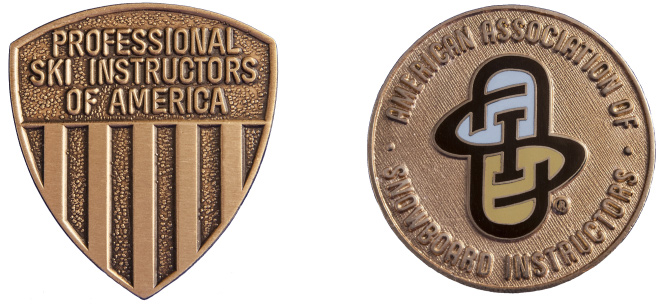Aspen-based ski instructor Nick Nagey was honored with PSIA-AASI’s Angus Graham Rising Star Award at PSIA-AASI National Academy in Big Sky, Montana, in April, recognizing his career path in the industry and ability to connect with his students and fellow instructors.
Craving Connection and Being Curious
In a post here on TheSnowPros.org, PSIA-AASI Executive Editor Christian Green wrote, “Nagey’s eagerness to connect goes a long way in helping students feel welcome. At the beginning of each lesson, his goal is to uncover something he can be genuinely curious about with his students, which is easy for him because he’s a people person. ‘I really crave connection and connecting my personal experience to theirs,’” he explained.
“Nagey uses what he’s learned to connect with students by applying analogies during lessons. For example, if one of his students enjoys wakeboarding, he might connect their experience on water to their experience on snow: ‘We’re going to start progressing our edges very much like you’re cutting into the wake,’ he might say. Or if a student plays tennis, he’ll focus on upper body and lower body separation.”
Reached this week to discuss how his ski instruction skills transfer to the rest of his professional life, Nagey, who has a property management business, provides legal consulting, and works as a general handyman, said, “I honestly think everything is a crossover. From a job I had working in a wine store to the work I do now, what I’ve learned and practiced as a ski instructor has touched every part of my career.”
He said the key to the core of every professional relationship is that when you’re dealing with a consumer, you have to create a connection and recognize what they’re nervous about or what they might fear – that includes a new tenant moving into a property or someone who is nervous about skiing steeper slopes.
“You have to be genuinely curious about where someone is coming from and what nerves they may be feeling about beginning a new experience,” Nagey said. “The goal is to give them the room to explain what they’re feeling or take it a little further so you can really recognize what it is they’re worried about.”
Nagey said he is a big fan of the Howard Gardner Theory of Multiple Intelligences, which focuses on the visual, auditory, and kinesthetic aspects of learning, and which way any given individual might learn best. “I think a lot of that can be answered just by being curious,” he said.
Feeling Part of a Community
In snowsports, it’s also important to help students and anyone who may have recently moved to a ski town feel part of the community – even if that’s in the offseason, before those people have experienced what it’s like to share chairlift rides, the changing weather, and the open slopes.
“My wife and I went for a hike yesterday, and afterwards went to a restaurant where a new guy was our waiter, and I was thinking about how in ski culture there is an instantaneous community, but you don’t get to experience it until the snow falls,” Nagey said. “I remember what it felt like before and after I got to work for the ski company, and how good it felt once I was in it and we were all sharing teaching tips, building community, and being a part of the community. Skiing in general has done a world of good for me and everyone around me, and there is that idea everyone can get behind, like the saying about how a rising tide lifts all boats.”
One of the most interesting aspects of living in a ski town, Nagey said, is how even though ski season makes up such a set time of year, “It’s a constant focus.”
“That’s how I can see the extent of ski teaching’s influence on my life,” Nagey said. “Because I’m always utilizing what I’ve learned, and it’s really about how you interact with others. In that regard, I don’t think there’s anything in teaching that isn’t part of my daily life.”

